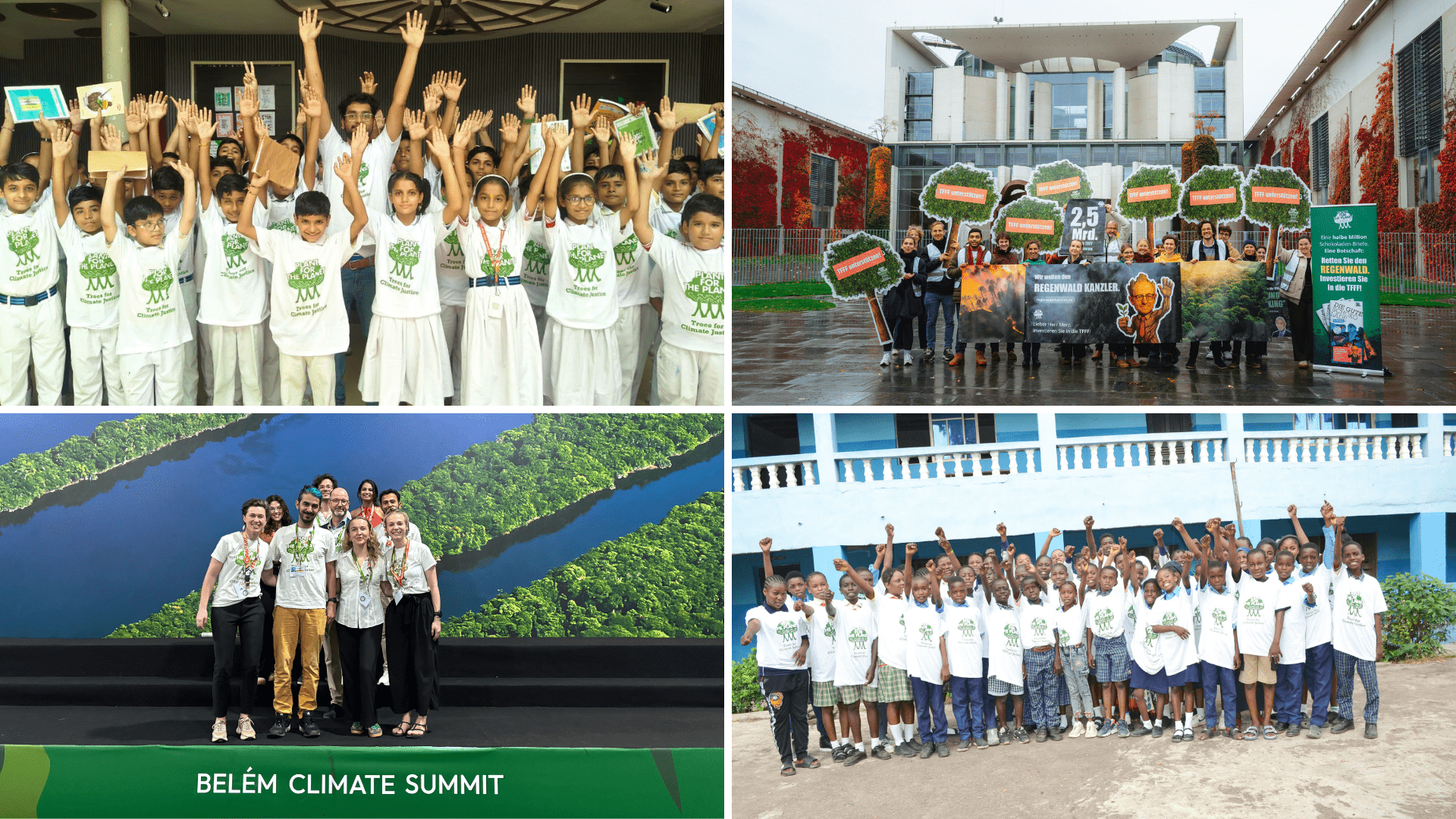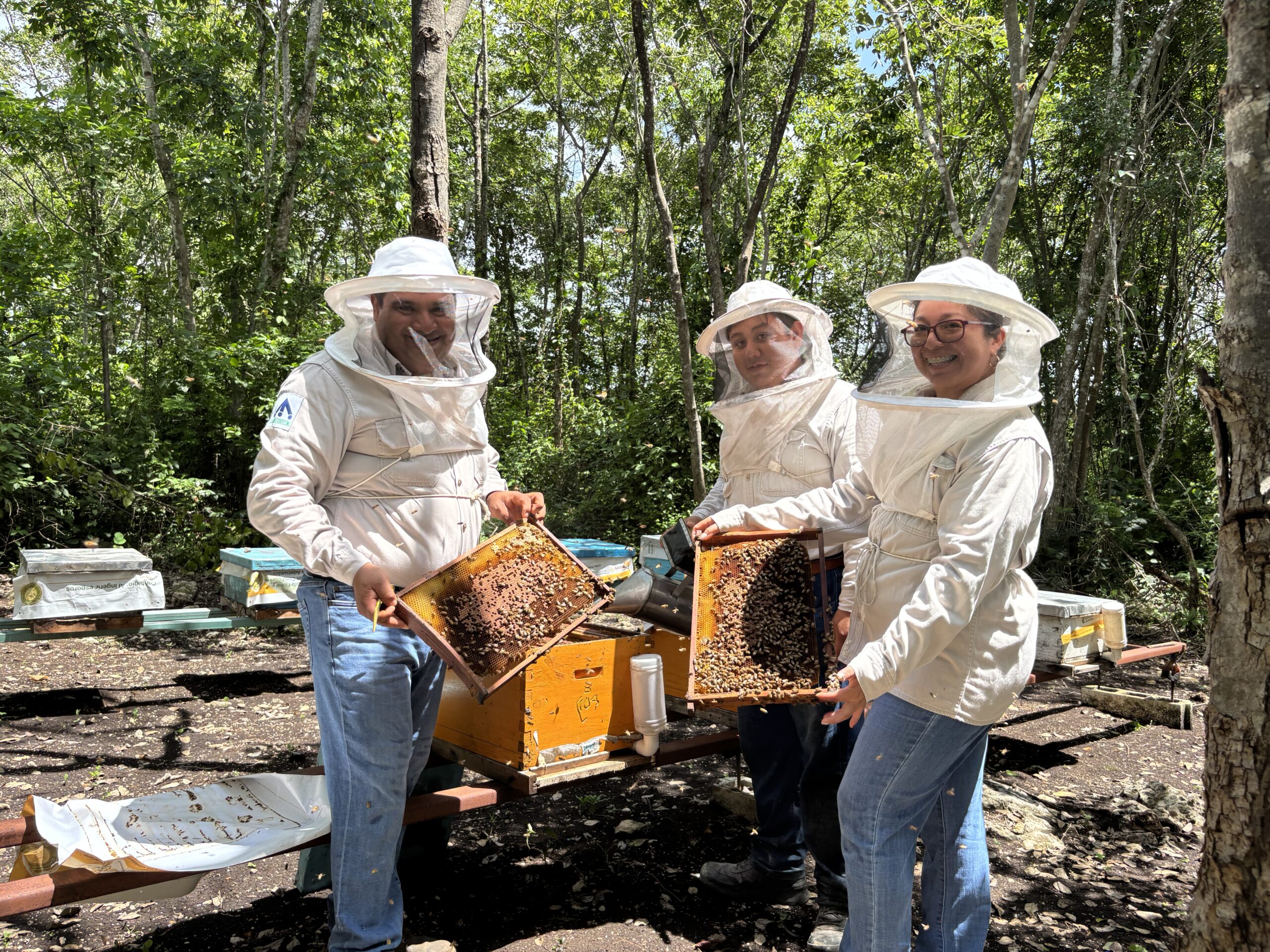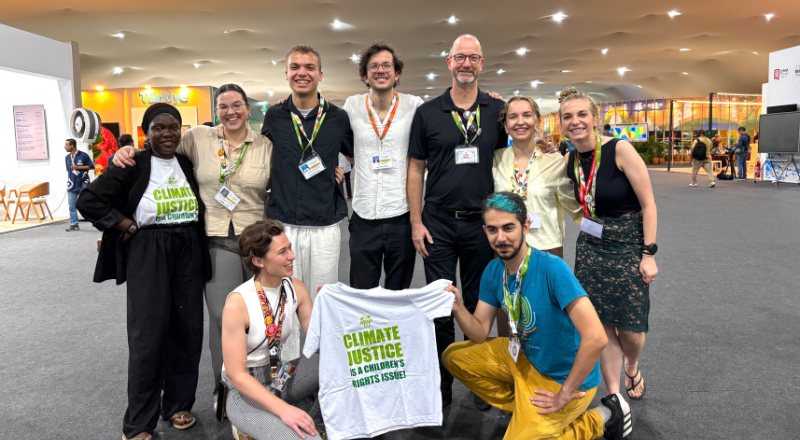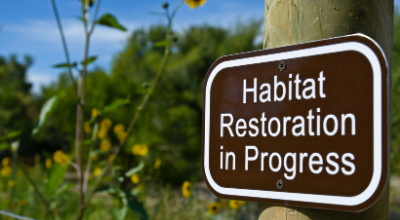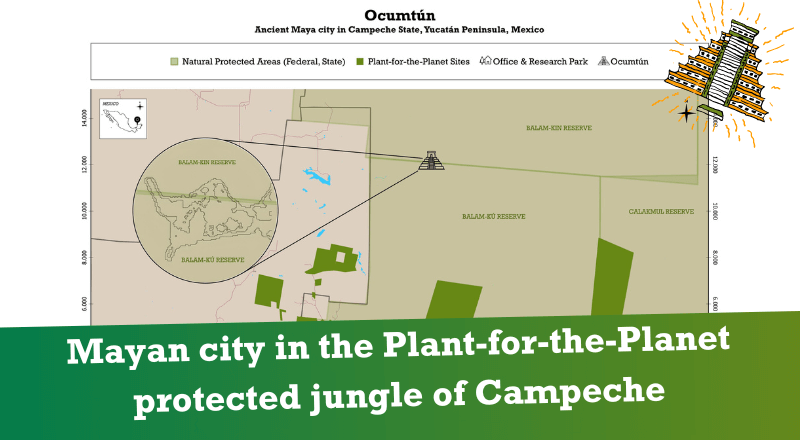
In a remarkable archaeological discovery, a team of researchers recently unveiled the remains of a hidden ancient Maya city deep within the dense jungles of Campeche, Mexico. Named Ocomtún, meaning “stone column” in the Yucatec Mayan language, this monumental site showcases the grandeur and complexity of the Maya civilization that once thrived in the region.
The findings shed light on the significance of the area, which is now an area that Plant-for-the-Planet protects in close collaboration with the government of Campeche.
Ocomtún, located within the Balam-Kú ecological reserve in the municipality of Calakmul, was discovered using state-of-the-art technology known as LiDAR (light detection and ranging). Prior to the expedition, the University of Houston’s National Center for Airborne Laser Mapping scanned the area with LiDAR, providing invaluable insights into the possible presence of archaeological relics. The findings prompted Slovenian archaeologist Ivan Šprajc to lead an expedition to the site. Šprajc and his team were astounded by what they encountered in the heart of the jungle: The core of Ocomtún spans over 50 hectares and encompasses structures of monumental proportions. Notable features include a pyramid towering 25 meters high, numerous cylindrical stone columns, and a ball court — a testament to the city’s significance and its role as a regional center during the Maya Classic period (A.D. 250-1,000). The site consists of three plazas surrounded by imposing buildings, with a group of low and long structures stretching out between the two largest plazas. Additionally, a calzada, or road, connects the buildings in the southeast to the northeast, where a remarkable 10-meter high rectangular “acropolis” dominates the landscape. Atop this structure lies the pyramid, reaching 25 meters in height. Ceramic artifacts found at Ocomtún date back to the late Classic period (600-800 AD), providing crucial clues about the city’s occupation and historical context. The removal of construction elements from buildings suggests a period of population changes, eventually leading to the collapse of the Maya civilization in the central lowlands by the 10th century.
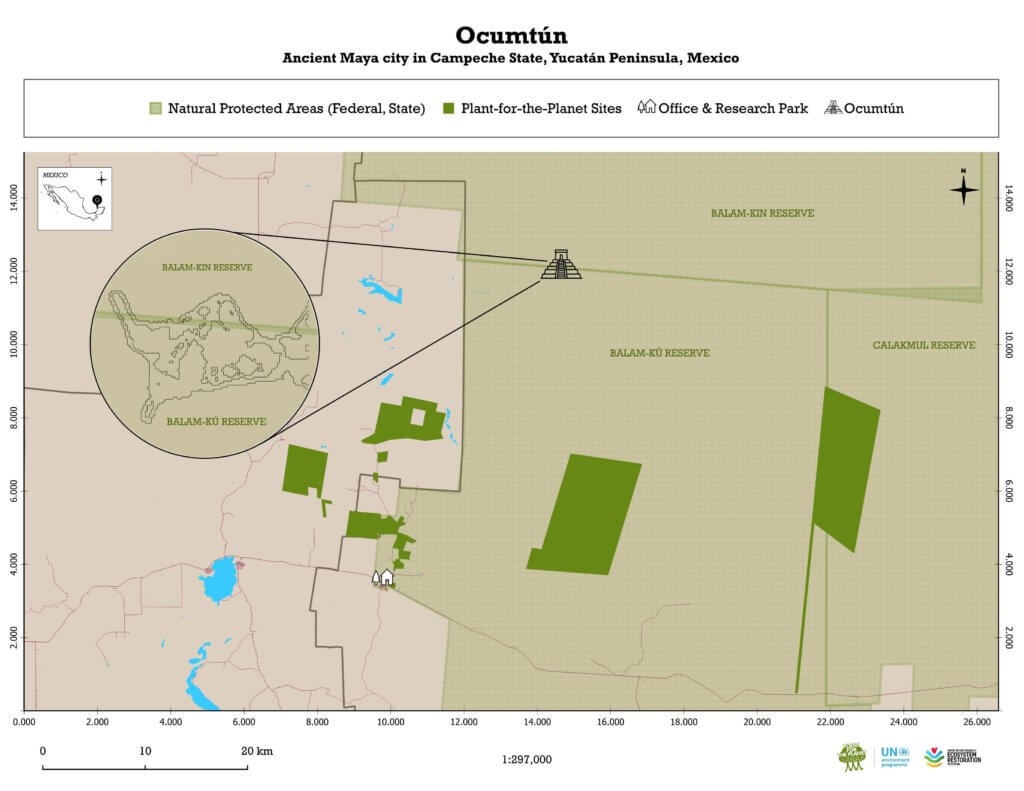
The rediscovery of Ocomtún underscores the importance of preserving and studying our cultural heritage. The archaeological project, “Ampliando el panorama arqueológico de las Tierras Bajas Centrales mayas” (Broadening the Archaeological Panorama of the Central Maya Lowlands), aims to expand our understanding of this largely unexplored area, covering approximately 3,000 square kilometers of the central part of Campeche state. Collaborative efforts between researchers, institutions, and the government of Campeche ensure the safeguarding of these invaluable remnants of the ancient Maya civilization.
The commitment of Plant-for-the-Planet to protect the rainforest in Campeche goes beyond the preservation of biodiversity and the fight against the climate crisis – which alone is reason enough to protect this forest. It now indirectly also encompasses the preservation of a remarkable piece of history – the remains of the ancient Mayan city. With the government of Campeche, we are committed to both: our environmental responsibility and our shared cultural heritage.
